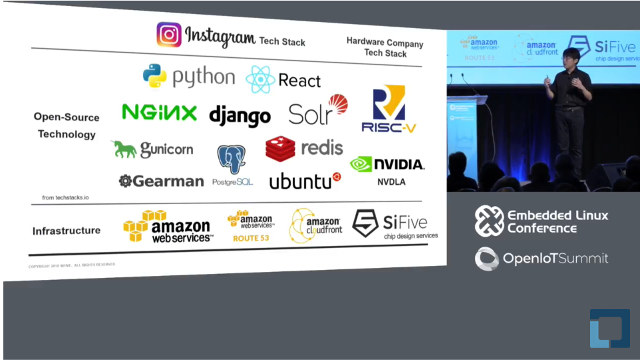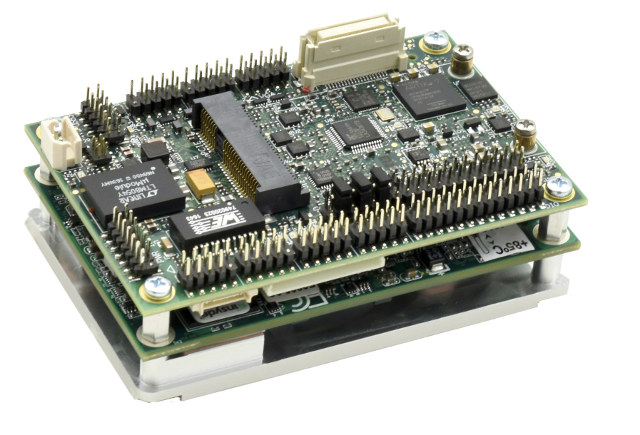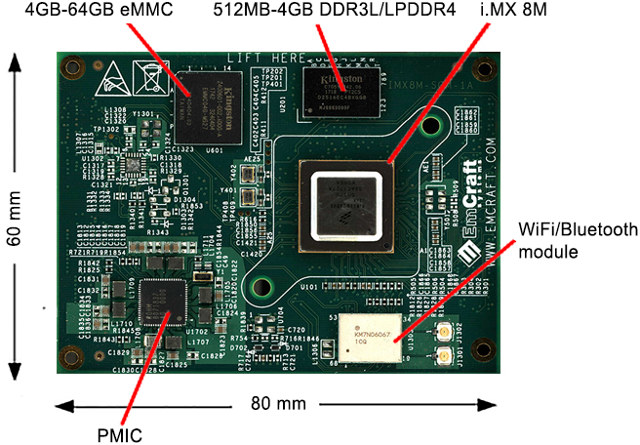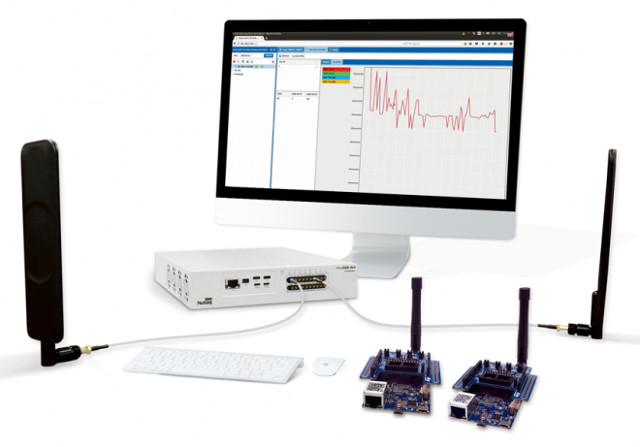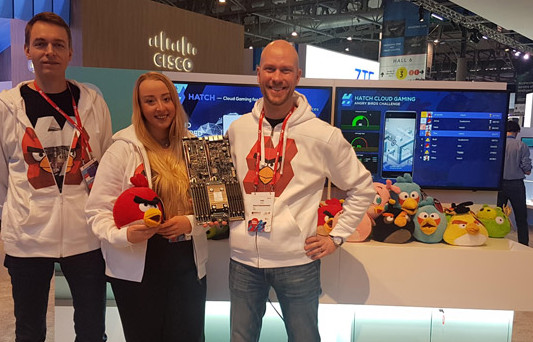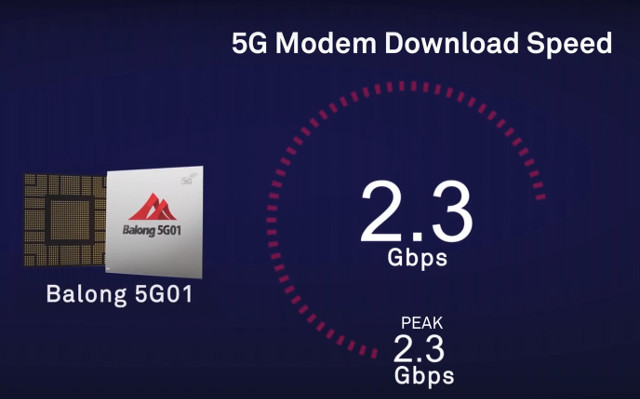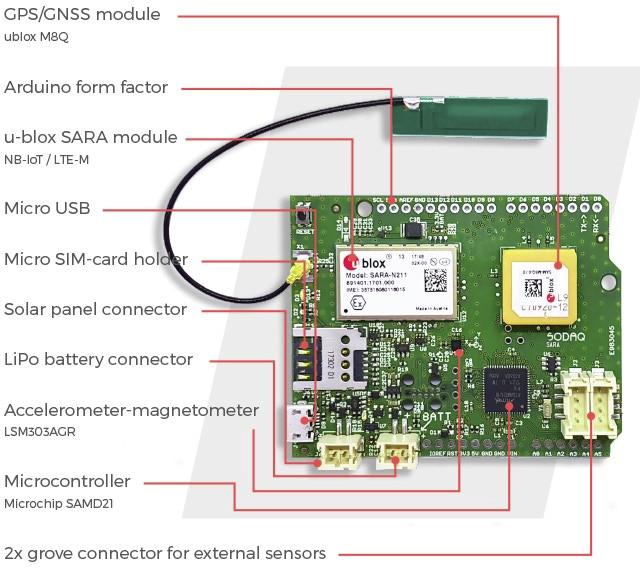The Embedded Linux Conference and OpenIoT Summit 2018 have just started, and the Linux Foundation has already uploaded a few keynote videos to YouTube, including the one by Yunsup Lee, Co-Founder and CTO, SiFive, entitled “Designing the Next Billion Chips: How RISC-V is Revolutionizing Hardware”. Yunsup explains the current problem with chip development, and go through the open source RISC-V solutions offered by Sifive. Currently design a chip has a high upfront (NRE = non-recurring engineering) costs, is time-consuming (1.5 to 2 years at least) and silicon vendors normally target high volume production, but now many applications like IoT or machine learning require custom chips that may not be (yet) manufactured in such high volume. The solution is to adapt some idea from open source software to open source hardware in order to lower the costs, enable fast prototyping, and involve the community of designers and software developers. He took […]
Diamond Systems Zeta is a Miniature SBC Based on Bay Trail/Apollo Lake COM Express Mini Modules
Diamond Systems, a Silicon valley based company providing embedded computing solutions for transportation, energy, aerospace, defense, manufacturing, medical and research market, has recently introduced Zeta single board computer comprised of a baseboard, a choice of COM Express Mini type 10 modules based on Intel Bay Trail or Apollo Lake processor, and a heatspreader for cooling. The company explains the small size and high feature density of the solution make it particularly suitable for mobile applications. The SBC also supports a wide range 6-36VDC input voltage, and works in -40 to +85°C temperature range. Zeta SBC specifications: COM’s Processor and System Memory Intel Atom Bay Trail E3825 dual core processor @ 1.33GHz with 2GB RAM Intel Atom Apollo Lake E3940 quad core processor @ 1.6GHz with 4GB RAM Intel Pentium Apollo Lake N4200 quad core processor @ 1.1GHz (burstable to 2.5GHz) with 8GB RAM Storage – 1x mSATA socket , 1x […]
Emcraft Introduces NXP i.MX 8M SoM and $299 Starter Kit
I first discovered Emcraft Systems in 2011 through their work porting uCLinux to Arm Cortex M3/M4 microcontrollers, and since then the company has kept on working microcontroller software and hardware, but also moved to Arm Cortex A class solutions. Like most embedded systems companies, Emcraft engineers have also designed their own NXP i.MX 8M system-on-module, but while many have still not announced pricing, and/or show “in development” or “early product announcement” in their product page, Emcraft has started taking pre-order for their i.MX 8M SoM Starter Kit for $299, with shipping scheduled for May 21, 2018 or before. Let’s check out SOM-IMX8M specifications first: SoC – NXP i.MX8M Quad processor with 4x Cortex A53 cores, 1x Cortex-M4F core, and a Vivante GC7000Lite GPU System Memory – 512MB to 4GB DDR3L/LPDDR4 SDRAM Storage – 4 to 64GB eMMC flash Connectivity – Wireless module supporting 802.11 a/b/g/n/ac 2×2 MIMO WiFi, Bluetooth 4.2, […]
Nutaq PicoLTE IoT Kit Allows NB-IoT and LTE Cat M1 Devices Testing Anywhere
If you’ve been following cellular IoT news you must have read plenty of announced about NB-IoT and LTE Cat M1 (eMTC) hardware platforms bring LTE connectivity at lower power and somewhat lower cost than existing 3GPP networks. That’s all good, and you may have decided to go ahead with a commercial project, except none of the Telco are providing LTE IoT connectivity in your area just yet, or if it does, you may also want to test your device in bands not allowed/supported in your country (at a permitted power level). If that’s the case, Nutaq PicoLTE IoT Kit should help as an LTE NarrowBand & Cat M test measurement platform for IoT that can test NB-IoT and Cat-M1 devices in all frequency bands. Nutaq PICOLTE IoT kit key features: Supports M1 & NB-IoT devices Proven compatibility with M1 & NB-IoT devices from over 5 manufacturers Test multiple devices simultaneously […]
Qualcomm Centriq 2400 Servers to Deliver Cloud based Mobile Gaming
Qualcomm Centriq 2400 Arm SoC launched at the end of last year, and with its 48 custom 64-bit Arm “Falkor” cores is optimized for datacenter workloads. But what everybody wants to know is whether it will run Crysis Angry Birds. And the answer is a resounding yes!, as Rovio’s subsidiary HATCH collaborated with Qualcomm to implement cloud gaming for mobile using Centriq 2400 based servers. The solution has the advantage of not requiring any additional downloads or installations after installing HATCH since everything is stored in the cloud, which also mean you’ll always get the latest version of the games. The game logic runs on the server, while the mobile phone takes user input in real-time, and the server can deliver 60 fps gaming for half the bandwidth required by HD video streaming. The company is now showcasing their solution at Mobile World Congress 2018 with an an early preview […]
Huawei Unveils Balong 5G01 5G Cellular Modem Chip, and 5G Routers
5G will start to take off in 2019. so we should be expecting hardware announcement this year, after having seen solutions by Qualcomm and Ericsson previously, Huawei has unveiled their Balong 5G01 5G Arm SoC and 5G CPEs (Customer Premise Equipment) / routers at Mobile World Congress 2018. We don’t have a whole information about the chip, except it’s a 64-bit Arm based SoC compatible with 3GPP telecommunication standard for 5G working with both sub-6 GHz and mmWave bands, and capable of achieving 2.3 Gbps peak throughput. Huawei Balong 5G01 chip is found in two HUAWEI 5G CPE, basically 5G WiFi router, one working at sub 6 GHz (low frequency) comprise of one indoor deice, and the other working at mmWave bands (high frequency) that requires two devices one indoor, one outdoor to receive the signal, since the latter would have troubles going through walls. The CPEs come with high […]
Samsung Galaxy S9 and S9+ Smartphones Launched with Snapdragon 845 or Exynos 9810 SoC
After various leaks on the web, Samsung has now officially launched their flagship smartphones – Samsung Galaxy S9/S9+ – at Mobile World Congress 2018. The phones look very much like last year’s Samsung S8/S8+ smartphones, but include faster processors with either Qualcomm Snapdragon 845 or Samsung Exynos 9810, better cameras (e.g. super slow motion mode @ 960 fps, low light improvements), some design tweaks (fingerprint scanner under the camera instead of on the side), and some new software features, like AR Emoji that creates your own virtual avatar based on your photo. Samsung Galaxy S9/S9+ specifications: SoC Qualcomm Snapdragon 845 octa-core processor with four Kryo 385 cores @ up to 2.8 GHz, four Kryo 385 cores @ up to 1.7 GHz, Adreno 630 GPU; 10nm Samsung Exynos 9810 oct-acore processor with four Exynos M3 core @ up to 2.7 GHz (Anandtech claims the max frequency can only be achieved when […]
SODAQ SARA is an Arduino Compatible Cellular IoT Board with LTE-M, NB-IoT, and GNSS (Crowdfunding)
There really seems to be a push for cellular IoT those days, with new hardware coming up every week. Following up on their NB-IoT shield for Arduino last year, SODAQ has now launched two versions of SARA boards based on u-blox SARA LTE-IoT modules, and u-blox M8Q GPS/GNSS module. Both boards are Arduino compatible thanks to a Microchip SAMD21 MCU, and while u-blox SARA board follows the Arduino form factor, u-box SARA SFF is much more compact (50×25.4 mm) and potentially easier to integrate into a project or product. Another pretty unique feature (AFAICT) is that you can power the board directly with a solar panel. u-blox SARA board specifications: Wireless module (three options) with external antenna: SARA-N211 NB-IoT, band 8 and 20, for the European and African market SARA-R410M Dual mode LTE-M and NB-IoT module for all global bands SARA-R412M Triple mode module with LTE-M, NB-IoT and 2G for […]


